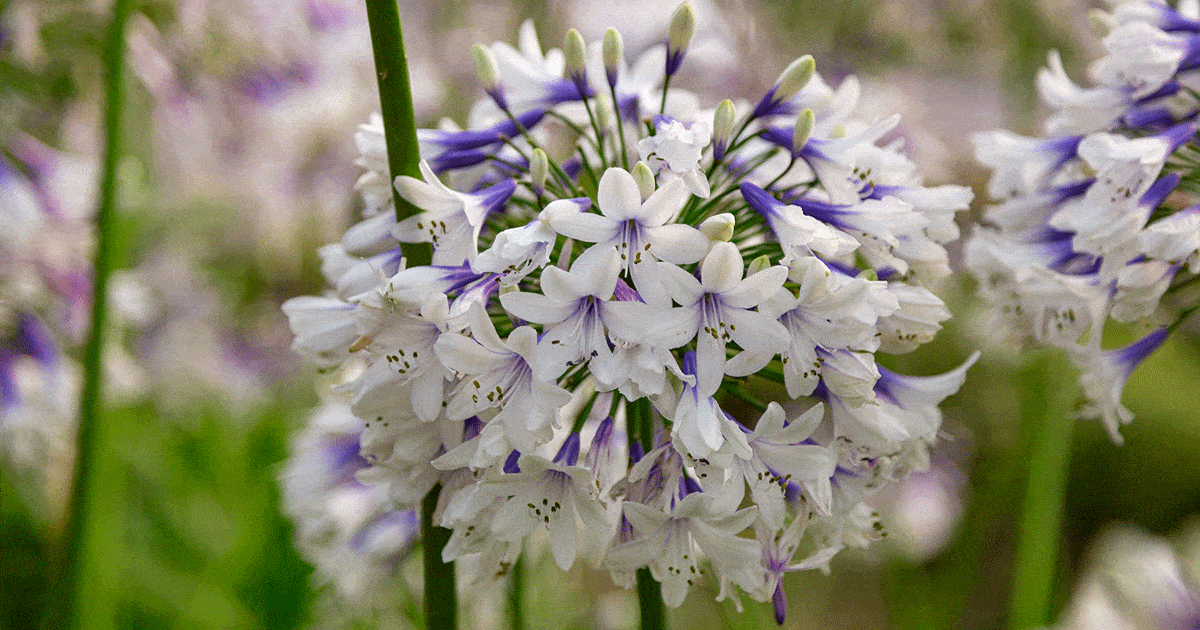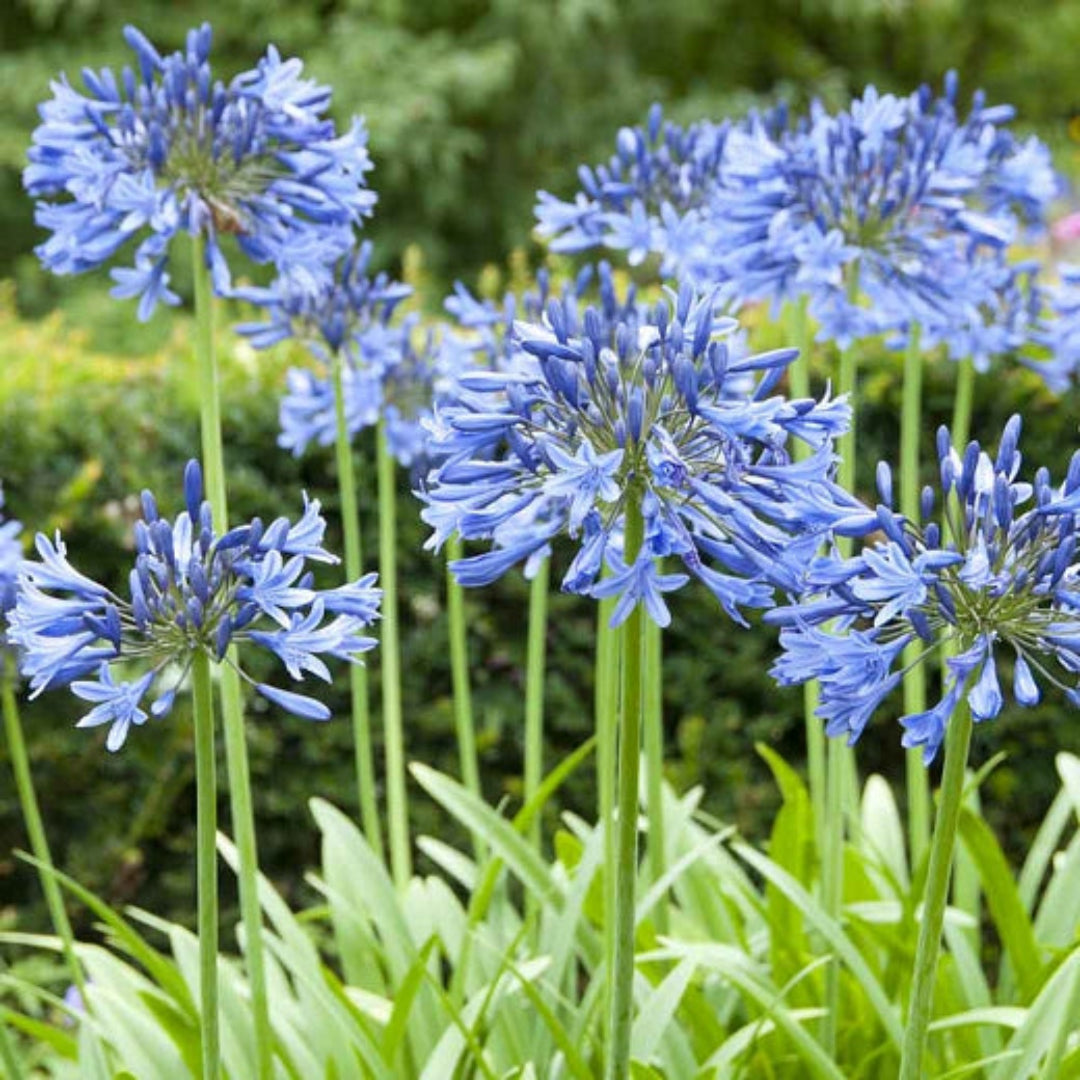Grasping the Art of Agapanthus Care: Crucial Actions for Healthy And Balanced Growth and Lively Blossoms
In the world of cultivation, the farming of agapanthus stands as a fulfilling undertaking for those who seek to nurture these stylish flowering plants. With their striking blooms and graceful foliage, agapanthus has actually captured the focus of gardeners worldwide. Nevertheless, attaining ideal development and dynamic blossoms calls for a nuanced strategy that encompasses different essential actions. From picking the ideal selection to grasping trimming methods, the trip in the direction of cultivating thriving agapanthus plants is diverse and holds the key to unlocking the complete possibility of these agricultural gems.

Picking the Right Agapanthus Selection

When choosing the ideal Agapanthus variety for your yard, think about factors such as climate suitability, bloom shade, and development behavior. Agapanthus, generally called Lily of the Nile or African lily, is available in a selection of colors ranging from tones of purple and blue to white. Choose a blossom color that complements your existing yard combination to develop an unified landscape. Furthermore, think about the environment in your area to guarantee the Agapanthus selection you choose can thrive in your certain conditions. Some ranges are extra tolerant of cool temperature levels, while others like warmer climates. Understanding the development routine of different Agapanthus varieties is critical for correct placement within your garden. Some selections have a clumping development behavior, suitable for boundaries or containers, while others have an even more dispersing nature, appropriate for ground cover or mass growings. By thoroughly assessing these elements, you can choose the ideal Agapanthus range to enhance the appeal of your garden.
Perfect Planting Conditions
Thinking about the ideal environmental requirements is necessary for successful Agapanthus farming. Agapanthus plants are sensitive to cold temperature levels and should be shielded from frost throughout wintertime months.
To guarantee healthy and balanced development and vibrant blossoms, plant Agapanthus bulbs at a deepness of concerning 2-4 inches and space them 8-12 inches apart. Adding natural matter, such as garden compost, to the dirt can enhance water drainage and fertility, advertising durable origin development. Mulching around the base of the plants aids maintain dampness and reduces weed development. Normal watering is vital, especially throughout the growing season, to maintain the dirt regularly moist but not waterlogged.
Watering and Fertilizing Tips
Preserving proper dampness degrees and supplying vital nutrients are crucial elements in the care regimen for Agapanthus plants. When it involves sprinkling Agapanthus, it is crucial to strike a balance. These plants like regularly wet soil but are at risk to root rot if overwatered. During the growing period, water deeply when a week, making these details certain the dirt is well-draining to stop waterlogging. In hotter environments or throughout durations of dry spell, more regular watering may be necessary to keep the soil equally wet. Nevertheless, reduce watering in the winter season to stop waterlogged conditions.
Fertilizing Agapanthus is crucial for advertising healthy and balanced growth and respected flowers. Use a well balanced plant food, such as a 10-10-10 formula, in the early springtime as new growth emerges. By adhering to these watering and fertilizing tips, you can guarantee your Agapanthus plants grow and generate vivid, long-lasting blooms.
Pruning Methods for Agapanthus
Pruning Agapanthus plants at the proper times and with appropriate techniques is important for maintaining their wellness and advertising optimum development and flowering. The excellent time to prune Agapanthus is in late winter months or very early springtime before brand-new development arises. Begin by eliminating any kind of dead or yellowing leaves near the base of the plant. Cut them as short as possible without damaging the emerging shoots.
For flowered stems, wait up until the blooms have withered and after that cut them back to the base. This not just cleans the plant's appearance but additionally urges the development of new blossom buds. Deadheading invested blossoms can also reroute the plant's power into generating even more flowers instead of setting seeds. However, if you desire to accumulate seeds for breeding, leave some blossoms to dry and fully grown on the plant.
Bear in mind to utilize tidy, sharp devices to make specific cuts and lower the risk of introducing conditions. Agapanthus. Normal trimming will aid maintain your Agapanthus looking healthy and balanced and neat while ensuring an abundant display screen of gorgeous blooms
Dealing With Common Parasites and Illness
After guaranteeing appropriate pruning methods for Agapanthus, it is vital to address usual pests and illness that can influence the health and wellness and vigor of these plants. Agapanthus plants are usually hardy but can directory still succumb specific concerns. One typical parasite that impacts Agapanthus is the Agapanthus gall midge. This tiny, orange fly lays its eggs in the vegetation, causing distorted growth and blossom buds that fall short to open up. To battle this bug, trim and damage any affected plant components and think about making use of insecticidal soap.
One more typical issue is fungal leaf area, which offers as dark sores on the leaves. To prevent fungal diseases, make certain good air blood circulation around the plants, avoid above watering, and eliminate any type of contaminated fallen leaves see this site quickly. Additionally, Agapanthus plants can deal with origin rot if they are grown in improperly draining dirt. To prevent this, plant Agapanthus in well-draining soil and prevent overwatering. By being cautious and taking timely action versus diseases and pests, you can aid your Agapanthus plants prosper and generate lively blossoms.

Final Thought
To conclude, grasping the art of agapanthus treatment includes choosing the appropriate range, providing ideal planting problems, correct watering and feeding, proper trimming strategies, and dealing with common bugs and diseases. By complying with these important steps, you can make certain healthy and balanced development and dynamic flowers for your agapanthus plants. Keep in mind to frequently keep track of and preserve your plants to advertise their overall health and long life.
To ensure healthy development and vivid flowers, plant Agapanthus light bulbs at a deepness of about 2-4 inches and room them 8-12 inches apart. By following these watering and feeding pointers, you can ensure your Agapanthus plants grow and generate lively, resilient blooms.
One typical pest that impacts Agapanthus is the Agapanthus gall midget. Furthermore, Agapanthus plants can experience from root rot if they are planted in badly draining pipes dirt. By complying with these important actions, you can make sure healthy growth and vibrant blooms for your agapanthus plants.
Comments on “Agapanthus Expanding Conditions: Dirt, Sunshine, and Watering”